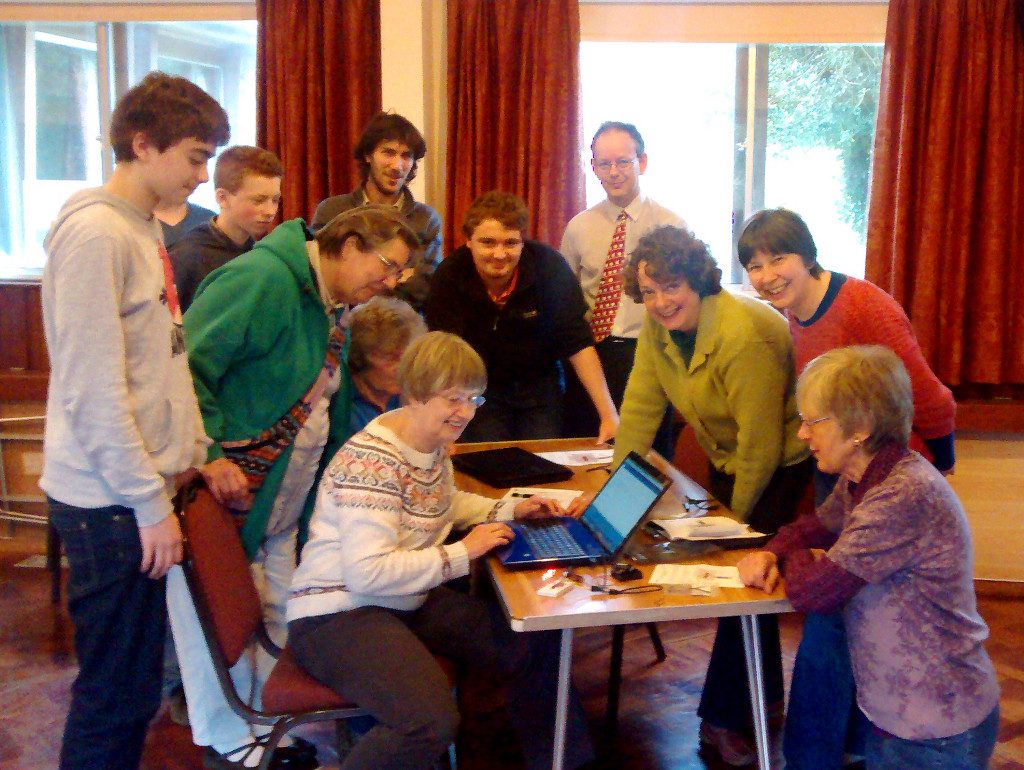Lymington (UK) has a number of interesting characteristics. For example, it has produced much of the UK Olympic sailing team in recent years, the vicar of its parish church, the Rev Peter Salisbury, is a former open source software engineer and, of course, it is home to Embecosm. As you would expect, the church office runs on GNU/Linux, church literature is produced using LibreOffice and management of church audio-visual during services uses OpenLP (open source really does get everywhere!)
Lymington also has another characteristic — a large elderly population. Not surprisingly, the church as part of its pastoral mission organizes events for the elderly, so there are groups for embroidery, knitting, flower arranging and so on. Observing one of these sessions in progress, I made a passing comment that perhaps we should offer an electronics workshop. But while its congregation may be elderly, they are not without enthusiasm for a challenge and so I was quickly asked to agree a date. And that is why Simon, Pierre and I found ourselves running a Shrimping workshop for 35 people, the majority of whom were well over 60 (and some by a long way).
We’ve run events for school children before. Usually for 11-13 year-olds, but occasionally as young as 9 years old. We already know that a clear picture of what to build, and ensuring wires and components exactly match the color on the diagram, are essential. An older audience has some advantages, and patience in waiting for someone to assist being an important one. But they also have some special needs: eyesight may be failing and fingers getting arthritic. So big pictures matter (we got that right), but so do big components. This is a time to use 1 watt resistors. Not all components come in big formats, so we should have provided magnifying glasses and some additional bright lighting. Distinctive colors also help. The standard shrimp uses a 100Ω resistor (brown-black-brown) and a 10kΩ resistor (brown-black-orange). Impaired eyesight may not easily tell brown and orange apart on a tiny component. We would have been wise to choose slightly different values: 56Ω (green-blue-black) would have been much easier to distinguish and sufficiently close to 100Ω for this application.
The picture doesn’t do justice to the event. Not surprisingly it was busy and come the end we realized that we had taken no photos. Hence the rather posed one of a few participants, to ensure we had at least one record of the afternoon! But most important, everyone enjoyed themselves, including the few who didn’t get anything to work in the time we had available. After all, not every grandparent can say to their grandchild, “I built a computer today”.
